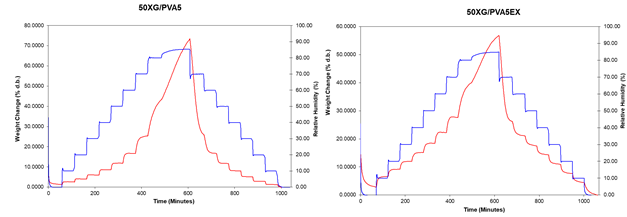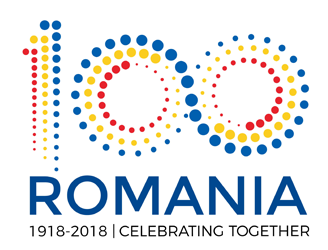
|
| Home | |||||
| Team Members | |||||
| Project Abstract | |||||
| Objectives | |||||
| Dissemination | |||||
|
|||||
| Contact |
Stage 2020: ![]()
Stage 3/2020 - To establish the applicability domain;
Activity 3.1. The behavior of the polymeric films at different pH values (the efficiency of the active biopackaging at the specific pH of different food products);
Activity 3.2. The permeability of the films at gas/liquid;
Activity 3.3. The behavior of the xanthan/PVA films at different values of the relative humidity;
Results

Figure 1. Swelling ratio of XG/PVA cryogels at pH 4 (A) and pH 7 (B) as a function of time
Static contact angles were determined by the droplet method at room temperature and under controlled humidity conditions, immediately after placing a 1 μL liquid drop on the sample surface. Measurements were performed at least 3 times on different portions of the surface, and their mean value was used for interpretation (Figure 2).


Figure 2.Contact angle data at different pH values for 50XG/PVA5 and 50XG/PVA5Ex.10
Figure 1 clearly shows a higher swelling capacity of the 50XG/PVA5 cryogels without extract compared to that containing red grape pomace extracts, irrespective of pH value of aqueous solutions. Taking into account the hydrophobic character of the natural compounds identified within red grape pomace extracts, the decrease of the swelling capacity (Figure 1) can be attributed to the decrease of the hydrophilic character of the cryogels with extract. This plays a major role by hindering the access of water into the pore cavities due to the decrease in the interaction capacity of the water molecules with the pore walls, which become more and more hydrophobic, with the increase in the amount of extract incorporated. The contact angle data (Figure 2) are well correlated with the swelling results. The decrease of the contact angle values with the increase of the pH value from 4 to 10, indicated a more hydrophilic XG/PVA network at pH 10. The swelling feature at pH 10 is controlled by the electrostatic repulsion between COO− groups from XG network.
Dynamic water vapor sorption capacity
Measurements were performed at 25 °C and the relative humidity (RH) was increased from 0 – 90% in 10% steps with a 50 - 60 min equilibrium time (Figure 3 and Figure 4). Step decreases (10% from 90 - 0%) gave desorption isotherms. A program with 5% humidity steps between 0 and 40% RH and 10% steps between 40 and 90% RH was used to determine the BET surface.

Figure 3. Water sorption-desorption kinetics of XG/PVA50/50 and XG/PVA50/50Ex cryogels

Figure 4. Sorption-desorption isotherms of 50XG/PVA5 and 50XG/PVA5Ex cryogels
The incorporation of red grape pomace extracts within XG/PVA films led to a decrease of the water retention capacity from 73.28 %d.b. to 56.8 %d.b. The DVS data were well correlated with the static swelling behavior of these XG/PVA cryogels. The BET surface was evaluated based on sorption isotherms; the BETH2O values were equal to 427.34 m2/g for 50XG/PVA5 and 250.79 m2/g for 50XG/PVA5Ex cryogels.

| Designed & Maintained by CLICK NET SOLUTIONS |


